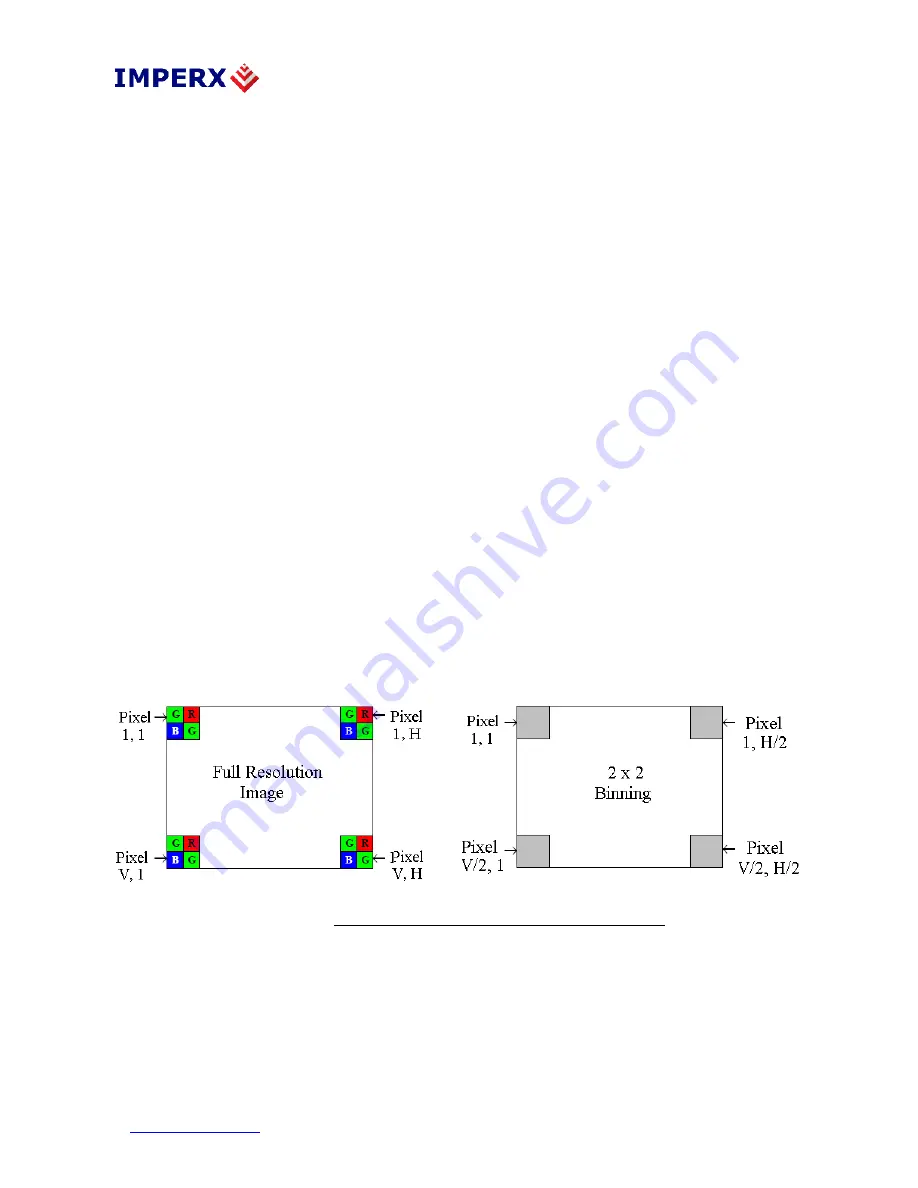
LYNX Manual RA02
2.3
BINNING
Binning uses the CCD sensor to combine adjacent pixels in both directions to
effectively create larger pixels and less resolution. In 2:1 horizontal binning
mode, two adjacent pixels in each line are summed together (in the horizontal
direction), For example, pixels 1+2, 3+4, 5+6, … in each line are summed
together. Horizontal binning does not affect the frame rate. It does, however,
reduce the horizontal resolution by a factor of 2. This occurs because when
binning two pixels together, only half of the pixels per line remain. Horizontal
binning is equivalent to 2:1 sub-sampling in the horizontal direction. In horizontal
binning mode, the entire image is captured and displayed, which is different than
horizontal windowing, where only a portion of the image is captured and
displayed.
Vertical binning 2:1 is a readout mode of progressive scan CCD image sensors
where two image lines are clocked simultaneously into the horizontal CCD
register before being read out. This results in summing the charges of adjacent
pixels (in the vertical direction) from two lines. For example, the corresponding
pixels in lines 1+2, 3+4, 5+6, … are summed together. Vertical binning reduces
the vertical resolution by a factor of 2, and almost doubles the frame rate. This
occurs because when binning two lines together, only half of the lines need to be
read out. Vertical binning is equivalent to 2:1 sub-sampling in the vertical
direction. In vertical binning the entire image is captured and displayed, which is
different than vertical windowing, where only a portion of the image is captured
and displayed. If horizontal and vertical binning are used simultaneously the
image is sub-sampled by 4 and the aspect ratio is preserved.
Figure 2.33 - Horizontal and Vertical Binning
www.imperx.com
60
of
154
5/6/2005
















































